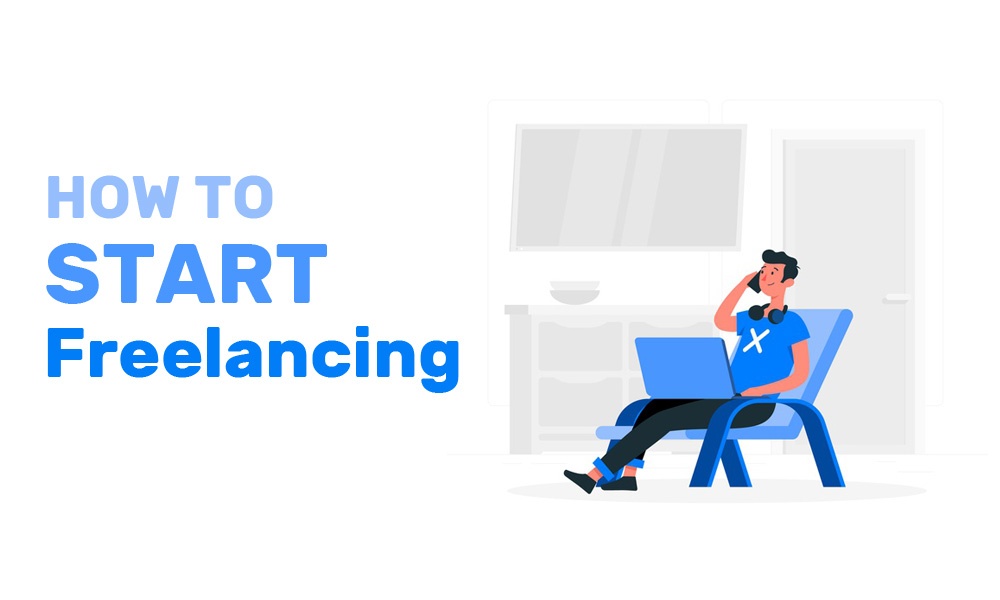Starting a freelancing career can be daunting, but with the right approach, you can set yourself up for success.
This article will guide you through the basics of freelancing, from establishing your niche to setting up your workflow and attracting your first clients.

What Are The Main Challenges for New Freelancers?
Taking the first step as a freelancer implies knowing in advance the many challenges that this career path could bring. This includes:
- Finding consistent work to maintain a stable income.
- Setting the right pricing for services without undercharging or overcharging.
- Managing all aspects of the business, including finances, marketing, and client relations.
- Overcoming the inevitable isolation.
- Time management and prioritizing tasks effectively.
- Building a reputable brand and portfolio from scratch.
- Navigating the complexities of contracts and negotiations.
- Dealing with the uncertainty and stress of irregular paychecks.
- Keeping skills current in a rapidly changing market.
- Securing health insurance and planning for retirement independently.
Basics of Freelancing: Identifying Your Freelance Skill Set
To identify your skill set, follow these freelancing tips:
- Think about what you are good at and what you enjoy doing.
- Review past feedback, including compliments on certain skills.
- Consider skills that are in demand and how yours match up.
- Test your skills with small projects or by offering help to peers.
- Assess your formal and informal education to pinpoint applicable abilities.
- Look at the market to see where your skills fit into existing needs.
Building a Professional Portfolio
Here is some freelance advice to build a professional portfolio as a new freelancer:
- Start with any previous work samples you have.
- If you lack experience, create mock-up projects relevant to your industry.
- Showcase a variety of skills and solutions through diverse work examples.
- Ensure high quality in each piece you include; it should represent your best work.
- Keep the portfolio concise; include only your strongest pieces.
- Update regularly with new, impressive projects.
- Present your portfolio on a professional platform like a personal website.
- Use clear descriptions for each piece, explaining the project and your role.
- Collect and display testimonials from clients or peers.
- Align your portfolio with your career goals, showcasing the direction you want to move in.
Establishing a Reliable Workflow
Establishing a reliable workflow as a new freelancer means setting up processes that allow you to work efficiently and meet deadlines consistently.
First, identify the steps you need to take from project inception to delivery. Adopt tools that aid in organization, such as project management software or a simple to-do list app, to keep track of tasks.
Set aside specific times for different types of work, like client communication, marketing, and actual project work. Establish routines that start and end your workday to create structure.
Make sure to include time for breaks to avoid overworking. Continuously refine your workflow by assessing what works well and what doesn’t, making adjustments as necessary.
Setting Up Your Freelance Business Legally
The basics of freelancing include knowing how to set up legally. For this, you should follow these tips for new freelancers:
- Decide on a business form (sole proprietorship, LLC, etc.).
- Register your business with the appropriate government body.
- Obtain any necessary business licenses or permits.
- Apply for an Employer Identification Number (EIN) if needed for tax purposes.
- Open a separate bank account for your business transactions.
- Choose an accounting system to track income and expenses.
- Learn about the tax obligations for your business type and location.
- Consider purchasing liability insurance to protect your business.
- Create a contract template for your services to use with clients.
- Keep all business documentation and records organized and accessible.
Marketing Yourself and Your Services
Marketing yourself and your services as a freelancer starts with understanding your unique value proposition—what sets you apart from others.
Develop a personal brand around this proposition. Create a professional website as your digital hub, showcasing your portfolio, services, and client testimonials.
Use social media platforms strategically to reach potential clients. Consider writing blog posts or creating content that demonstrates your knowledge and skills. Network both online and offline.

Managing Finances as a Freelancer
This implies being meticulous with your income and expenses to maintain a healthy business cash flow. You need to invoice clients promptly and follow up on payments to ensure you get paid on time.
Keeping a detailed record of all business transactions is crucial for understanding your financial health and preparing for taxes. You must also budget for irregular income, saving during peak earning.
It’s advisable to use financial software or consult with a financial advisor for financial tips for freelancers, especially if dealing with complex projects or multiple income streams.
Pricing Your Services Competitively
These basics of freelancing involve researching the market to understand the going rate for your skills.
Take into account your experience level, the quality of your work, and the complexity of the services you offer. Factor in your business costs, including taxes, software, hardware, and other overheads.
Consider offering tiered pricing for different levels of service or project scopes. Always communicate the value you bring to a project, not just the hours it will take.
Ideal Freelancing Jobs for Beginners
Tips to start freelancing suggest considering the following jobs:
- Social Media Manager: Manage accounts and content for businesses.
- Content Writer: Write articles, blog posts, and web content.
- Graphic Designer: Create logos, brochures, and other designs.
- Virtual Assistant: Handle administrative tasks for clients remotely.
- Web Developer: Build and maintain simple websites.
- SEO Consultant: Optimize websites for search engines.
- Data Entry Specialist: Input data for companies.
- Video Editor: Edit videos for online content creators.
- Translator: Translate documents or content for businesses.
- Customer Service Representative: Provide remote support for customer inquiries.
For new freelancers, top platforms include Upwork, Freelancer, Fiverr, and LinkedIn ProFinder. These sites offer diverse job opportunities and resources to help you start.
Sign up on the platform and create a compelling profile detailing your skills and experience. Browse jobs that match your skill set, and submit proposals or bids for projects.
Network and communicate clearly with potential clients, and always ask for reviews after completing work to build your reputation.
Conclusion
The basics of freelancing involve understanding key areas: identifying your skills, setting up your business legally, creating a portfolio, marketing yourself, managing finances, and a reliable workflow.
You start by recognizing your freelance skill set, then build a portfolio that showcases these skills. Legally structuring your business and managing your finances responsibly is critical.
Marketing your services effectively and competitively pricing them is also essential to attract and retain clients. Finally, establishing a workflow helps in delivering quality work on time.
